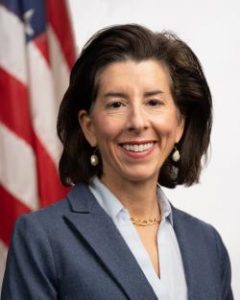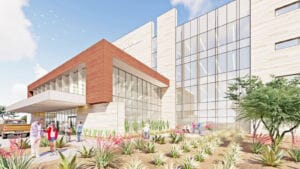Employers across Arizona and the U.S. are facing worker shortages at record levels and business leaders and chambers of commerce are urging state and national lawmakers to invest in new workforce initiatives to help fill millions of job openings.
READ ALSO: 20 Metro Phoenix companies that are hiring now

In April, employers reported a record-high 9.3 million open jobs, said Neil Bradley, Chief Policy Officer for the U.S. Chamber of Commerce, who spoke at the organization’s recent summit, Workforce: A Call to Action. In Arizona, 160,000 to 180,000 jobs were unfilled in March, according to U.S. Bureau of Labor statistics.
“The problem is hurting retailers on Main Street and the nation’s largest employers in our biggest cities,” Bradley said. “When businesses do not have enough employees, they’re forced to turn down jobs and reduce the number of hours that they’re open.”

Almost 5,400 business leaders representing every state tuned in to the summit this month to discuss worker shortages and workforce challenges, share solutions and rally support for the Chamber’s new America Works Agenda initiative to address the “talent crisis.”
The initiative recommends federal and state policy changes in three areas to expand employee pools: train more Americans for in-demand jobs, remove barriers to work, and double the number of visas available for legal immigrants.
U.S. Secretary of Commerce Gina Raimondo was a keynote speaker who talked about the administration’s American Jobs Plan, which calls for funding 1 million apprenticeships in building trades, as well as digital apprenticeships in cybersecurity, software engineering, accounting, and quality assurance.
America experiencing a “talent crisis”
America is facing a double-dose of worker shortages and workforce challenges, Bradley said. There are too many people without jobs. And there are too many jobs without skilled people to fill them.
A recent national survey of local chambers of commerce, 90 percent reported that it is “difficult” for businesses in their area to hire workers, with two-thirds reporting it was “very difficult,” Bradley said. Less than 1 percent said it was easy to fill jobs.
Many industries are being affected including agriculture, education, manufacturing, healthcare, hospitality, computer software, and construction. A recent survey of the commercial construction industry shows that 85 percent of contractors are having difficulty finding workers, he said. Of those, 34 percent have had to turn down work.
“All this slows down the economy. Indeed, local chambers of commerce are twice as likely to say that a lack of workers is holding back the economy as they are to say that Covid is holding it back,” Bradley said.
Call to businesses, stakeholders to rally for initiative
The summit is part of a new initiative by the U.S. Chamber Foundation, called America Works, to mobilize industry and government to act quickly to address America’s “deepening worker shortage crisis.”
CEOs, trade associations and chambers of commerce are encouraging their employees and members to call on state and federal lawmakers to adopt recommendations in the initiative. Here’s a sampling of recommendations in four key areas:
Upskill American workers
• Fund and support employer collaboratives and sector partnerships at the state and local levels tasked with building talent pipelines based on in-demand jobs and skills using their preferred training partners
Immigration reform
• Double the cap on employment-based immigrant visas from 140,000 per year to 280,000, including seasonal agricultural workers and high-tech professionals
• Provide international students who graduate from U.S. universities with more opportunities to obtain employment-based green cards upon graduation
• Enhance and expand the opportunities for entrepreneurs to obtain permanent residency so they can build their businesses here in the United States
• Create a new, geographically targeted visa program, along the lines of the Heartland Visa proposal, that will drive economic and population growth into American communities struggling with the serious economic and social problems caused by significant population loss
Education and training
• Grow federal investments in employer-led job education and training programs
• Expand Pell grants for non-credit workforce training
• Create “skills saving accounts” to help employees and employers manage continuing education costs and avoid new student debt
Remove barriers to work to ease worker shortages
• Expand access to affordable, quality childcare for working parents
• Improve “second chance” hiring through public-private agreements to support employment opportunities for formerly incarcerated individuals
• Remove occupational licensing restrictions that make entering a new field time-intensive, cost-prohibitive, and restricts opportunities for mobility.

“We must arm workers with the skills they need, we must remove barriers that are keeping too many Americans on the sidelines, and we must recruit the very best from around the world to help fill high-demand jobs,” said Suzanne Clark, president and CEO of the U.S. Chamber, one of the keynote speakers at the summit.
To view an analysis of the numbers behind the workforce crisis, visit: The America Workforce: Quantifying the Nation’s Workforce CrisisTo view the U.S. Chamber’s America Works Agenda, a suite of legislative and regulatory solutions at the federal and state level to help address the crisis, go to: America Works Agenda
This story was originally published at Chamber Business News.




